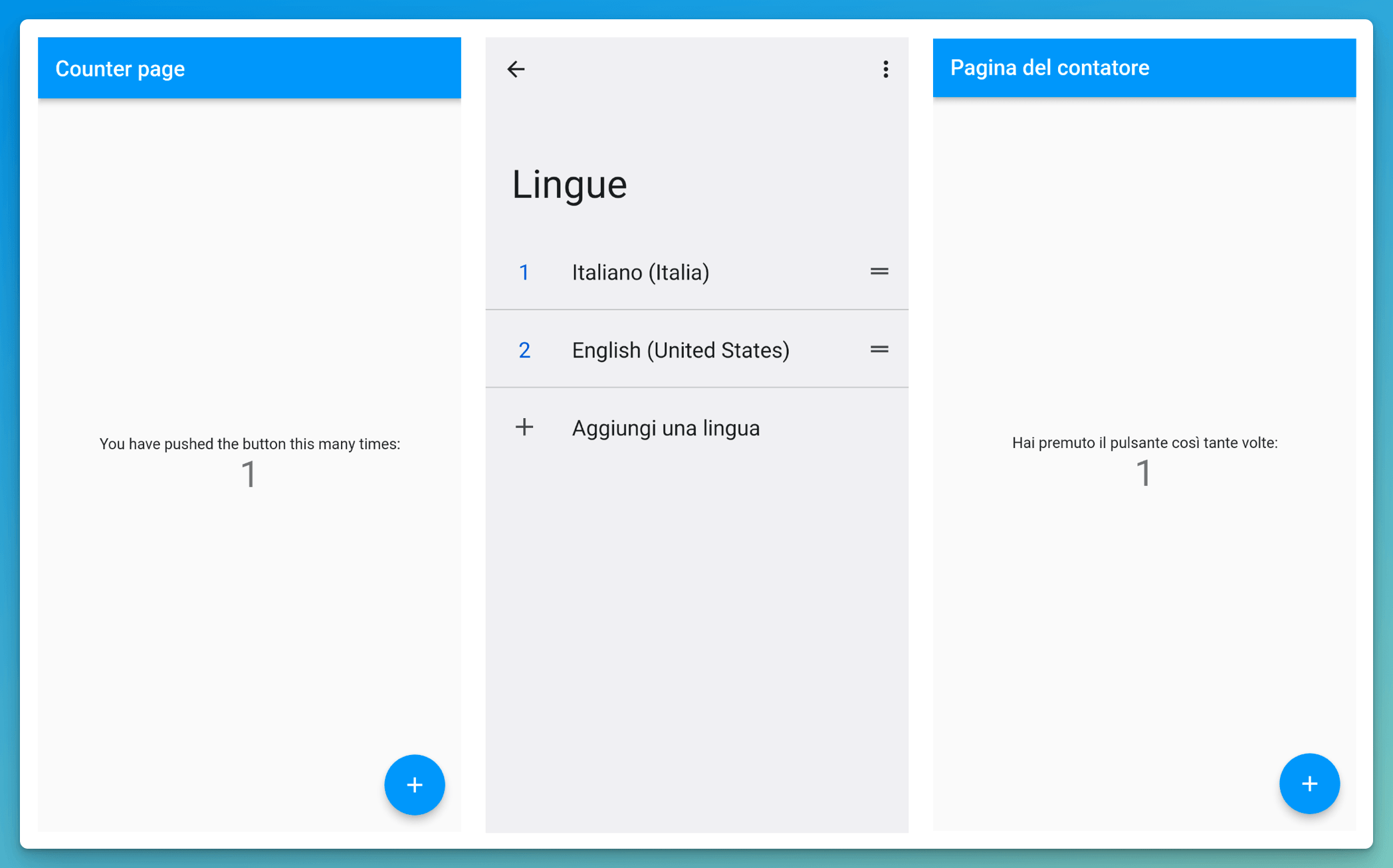This is an example of the Flutter counter app with localization support.
The project contains an appLocalizationsProvider that can be used to access localized strings outside the widgets, without using BuildContext:
/// provider used to access the AppLocalizations object for the current locale
final appLocalizationsProvider = Provider<AppLocalizations>((ref) {
// 1. set the initial locale
ref.state = lookupAppLocalizations(ui.window.locale);
// 2. create an observer to update the state
final observer = _LocaleObserver((locales) {
ref.state = lookupAppLocalizations(ui.window.locale);
});
// 3. register the observer and dispose it when no longer needed
final binding = WidgetsBinding.instance;
binding.addObserver(observer);
ref.onDispose(() => binding.removeObserver(observer));
// 4. return the state
return ref.state;
});
/// observed used to notify the caller when the locale changes
class _LocaleObserver extends WidgetsBindingObserver {
_LocaleObserver(this._didChangeLocales);
final void Function(List<Locale>? locales) _didChangeLocales;
@override
void didChangeLocales(List<Locale>? locales) {
_didChangeLocales(locales);
}
}
// given a Ref object, use it like this:
final loc = ref.read(appLocalizationsProvider);
print(loc.somethingWentWrong);The UI of the sample app updates automatically when changing the locale from the system settings:
To change the language on the Android emulator:
- swipe up from the bottom to reveal all the Settings app
- go to System > Languages & input and change the first language
Note: changing the language on Android won't kill the running app
To change the language on the iOS simulator:
- go to Settings > General > Language & Region > iPhone Language
Note: when changing the language on iOS, your app will be killed by the OS and you'll have to restart it.
